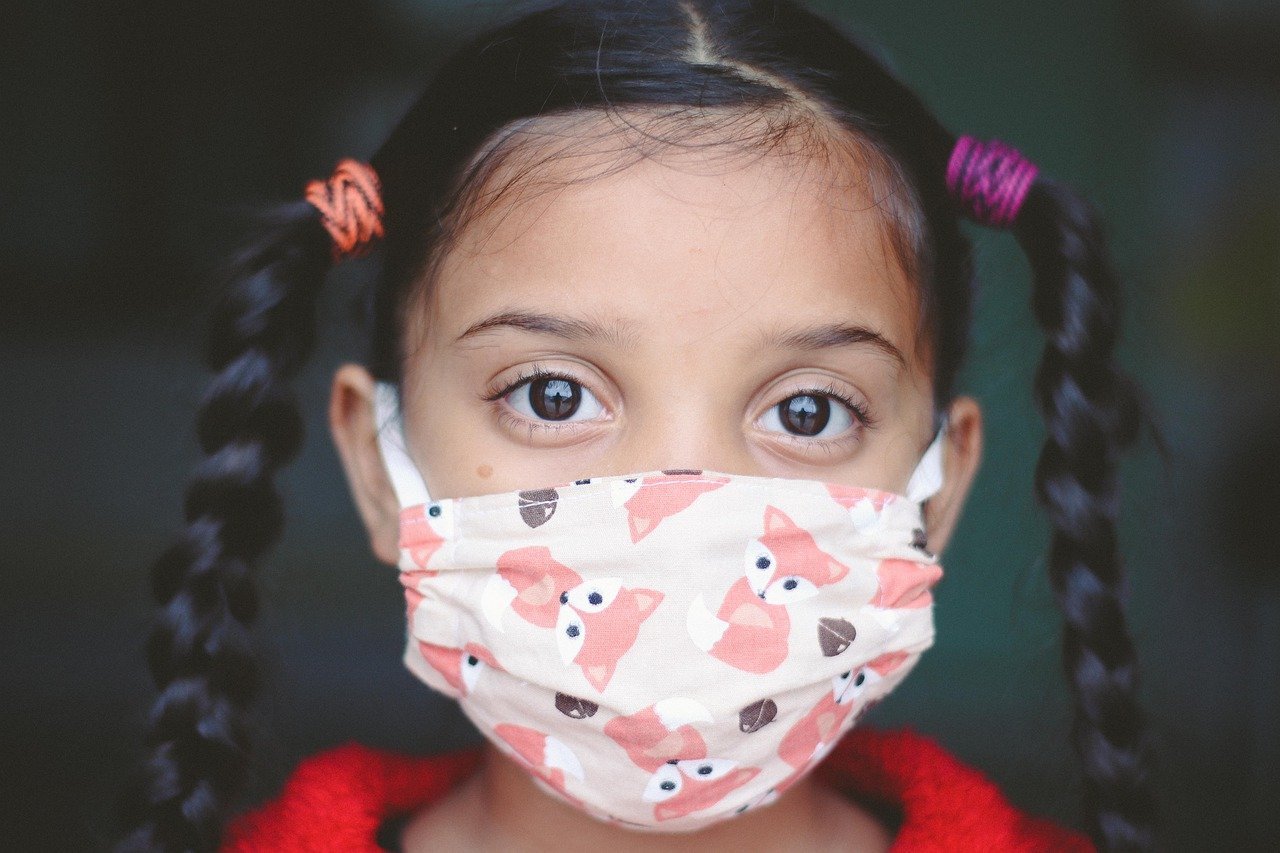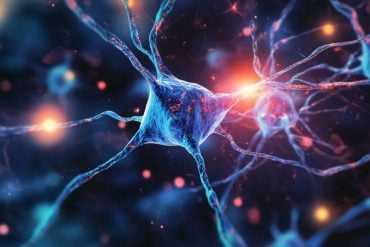Summary: 1 in 20 children hospitalized for COVID-19 in the UK develop neurological complications associated with the viral infection. A new study reveals a wide spectrum of neurological complications in children and suggests they may be more common than in adults admitted to hospital with COVID.
Source: University of Liverpool
Although the risk of a child being admitted to hospital due to COVID-19 is small, a new UK study has found that around 1 in 20 of children hospitalized with COVID-19 develop brain or nerve complications linked to the viral infection.
The research, published in The Lancet Child and Adolescent Health and led by the University of Liverpool, identifies a wide spectrum of neurological complications in children and suggests they may be more common than in adults admitted with COVID-19.
While neurological problems have been reported in children with the newly described post-COVID condition paediatric inflammatory multisystem syndrome temporally associated with SARS-CoV-2 (PIMS-TS), the capacity of COVID-19 to cause a broad range of nervous system complications in children has been under-recognised.
To address this, the CoroNerve Studies Group, a collaboration between the universities of Liverpool, Newcastle, Southampton and UCL, developed a real-time UK-wide notification system in partnership with the British Paediatric Neurology Association.
Between April 2020 and January 2021, they identified 52 cases of children less than 18 years old with neurological complications among 1,334 children hospitalised with COVID-19, giving an estimated prevalence of 3.8%. This compares to an estimated prevalence of 0.9% in adults admitted with COVID-19.
Eight (15%) children presenting with neurological features did not have COVID-19 symptoms although the virus was detected by PCR, underscoring the importance of screening children with acute neurological disorders for the virus.
Ethnicity was found to be a risk factor, over two thirds of children being of Black or Asian background.
For the first time, the study identified key differences between those with PIMS-TS versus those with non-PIMS-TS neurological complications. The 25 children (48%) diagnosed with PIMS-TS displayed multiple neurological features including encephalopathy, stroke, behavioural change, and hallucinations; they were more likely to require intensive care.
Conversely, the non-PIMS-TS 27 (52%) children had a primary neurological disorder such as prolonged seizures, encephalitis (brain inflammation), Guillain-Barré syndrome and psychosis. In almost half of these cases, this was a recognised post-infectious neuro-immune disorder, compared to just one child in the PIMS-TS group, suggesting that different immune mechanisms are at work.
Short-term outcomes were apparently good in two thirds (65%) although a third (33%) had some degree of disability and one child died at the time of follow-up. However, the impacts on the developing brain and longer-term consequences are not yet known.
First author Dr Stephen Ray, a Wellcome Trust clinical fellow and paediatrician at the University of Liverpool said:
“The risk of a child being admitted to hospital due to COVID-19 is small, but among those hospitalised, brain and nerve complications occur in almost 4%. Our nationwide study confirms that children with the novel post-infection hyper-inflammatory syndrome PIMS-TS can have brain and nerve problems; but we have also identified a wide spectrum of neurological disorders in children due to COVID-19 who didn’t have PIMS-TS. These were often due to the child’s immune response after COVID-19 infection.”

Joint senior-author Dr Rachel Kneen, a Consultant Paediatric Neurologist at Alder Hey Children’s NHS Foundation Trust and honorary clinical Senior Lecturer at the University of Liverpool said:
“Many of the children identified were very unwell. Whilst they had a low risk of death, half needed intensive care support and a third had neurological disability identified. Many were given complex medication and treatments, often aimed at controlling their own immune system. We need to follow these children up to understand the impact in the long term.”
Joint senior-author Dr Benedict Michael, a senior clinician scientist and MRC Fellow at the University of Liverpool said:
“Now we appreciate the capacity for COVID-19 to cause a wide range of brain complications in those children who are hospitalised with this disease, with the potential to cause life-long disability, we desperately need research to understand the immune mechanisms which drive this. Most importantly- How do we identify those children at risk and how should we treat them to prevent lasting brain injury? We are so pleased that the UK government has funded our COVID-CNS study to understand exactly these questions so that we can help inform doctors to better recognise and treat these children.”
About this neurology and COVID-19 research news
Source: University of Liverpool
Contact: Jenny Morgan – University of Liverpool
Image: The image is in the public domain
Original Research: Open access.
“Neurological manifestations of SARS-CoV-2 infection in hospitalised children and adolescents in the UK: a prospective national cohort study” by Rachel Kneen et al. Lancet Child and Adolescent Health
Abstract
Neurological manifestations of SARS-CoV-2 infection in hospitalised children and adolescents in the UK: a prospective national cohort study
Background
The spectrum of neurological and psychiatric complications associated with paediatric SARS-CoV-2 infection is poorly understood. We aimed to analyse the range and prevalence of these complications in hospitalised children and adolescents.
Methods
We did a prospective national cohort study in the UK using an online network of secure rapid-response notification portals established by the CoroNerve study group. Paediatric neurologists were invited to notify any children and adolescents (age <18 years) admitted to hospital with neurological or psychiatric disorders in whom they considered SARS-CoV-2 infection to be relevant to the presentation.
Patients were excluded if they did not have a neurological consultation or neurological investigations or both, or did not meet the definition for confirmed SARS-CoV-2 infection (a positive PCR of respiratory or spinal fluid samples, serology for anti-SARS-CoV-2 IgG, or both), or the Royal College of Paediatrics and Child Health criteria for paediatric inflammatory multisystem syndrome temporally associated with SARS-CoV-2 (PIMS-TS).
Individuals were classified as having either a primary neurological disorder associated with COVID-19 (COVID-19 neurology group) or PIMS-TS with neurological features (PIMS-TS neurology group). The denominator of all hospitalised children and adolescents with COVID-19 was collated from National Health Service England data.
Findings
Between April 2, 2020, and Feb 1, 2021, 52 cases were identified; in England, there were 51 cases among 1334 children and adolescents hospitalised with COVID-19, giving an estimated prevalence of 3·8 (95% CI 2·9–5·0) cases per 100 paediatric patients. 22 (42%) patients were female and 30 (58%) were male; the median age was 9 years (range 1–17). 36 (69%) patients were Black or Asian, 16 (31%) were White. 27 (52%) of 52 patients were classified into the COVID-19 neurology group and 25 (48%) were classified into the PIMS-TS neurology group. In the COVID-19 neurology group, diagnoses included status epilepticus (n=7), encephalitis (n=5), Guillain-Barré syndrome (n=5), acute demyelinating syndrome (n=3), chorea (n=2), psychosis (n=2), isolated encephalopathy (n=2), and transient ischaemic attack (n=1).
The PIMS-TS neurology group more often had multiple features, which included encephalopathy (n=22 [88%]), peripheral nervous system involvement (n=10 [40%]), behavioural change (n=9 [36%]), and hallucinations at presentation (n=6 [24%]). Recognised neuroimmune disorders were more common in the COVID-19 neurology group than in the PIMS-TS neurology group (13 [48%] of 27 patients vs 1 [<1%] of 25 patients, p=0·0003).
Compared with the COVID-19 neurology group, more patients in the PIMS-TS neurology group were admitted to intensive care (20 [80%] of 25 patients vs six [22%] of 27 patients, p=0·0001) and received immunomodulatory treatment (22 [88%] patients vs 12 [44%] patients, p=0·045). 17 (33%) patients (10 [37%] in the COVID-19 neurology group and 7 [28%] in the PIMS-TS neurology group) were discharged with disability; one (2%) died (who had stroke, in the PIMS-TS neurology group).
Interpretation
This study identified key differences between those with a primary neurological disorder versus those with PIMS-TS. Compared with patients with a primary neurological disorder, more patients with PIMS-TS needed intensive care, but outcomes were similar overall. Further studies should investigate underlying mechanisms for neurological involvement in COVID-19 and the longer-term outcomes.
Funding
UK Research and Innovation, Medical Research Council, Wellcome Trust, National Institute for Health Research.






